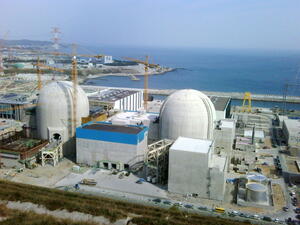The Korean experience
During operation, the ITER Tokamak will generate considerable quantities of heat. If ITER were a power plant, this heat would be used to produce steam that would be supplied to a turbine generator to produce electricity.
In ITER—which is a scientific experiment—the heat produced during pulses will be transferred through two successive "closed" cooling water loops and then, finally, through a third "open" loop in which the heat will be evaporated to the ambient atmosphere by way of cooling towers.
Water in the first closed loop—the tokamak cooling water system (TCWS)—will be activated by the neutron and radiation flux from the plasma, as well as by tritium permeating through the plasma-facing components. The TCWS piping is a primary confinement barrier designed to minimize any potential release of radioactive water into the Tokamak Building.
In designing ITER's piping network, several parameters have to be taken into consideration. "We need to have a precise knowledge of all the forces acting on the piping system during operation," explains Warren Curd, ITER's Cooling Water System Section Leader. "And, we need to ensure that the pipe stresses are well below the allowable stress levels during all modes of operation. The way to do this is to perform what we call a 'piping stress analysis.'"
In October of this year, Warren and colleagues from the cooling water team in Cadarache, plus members of the US ITER team, travelled to Korea to meet with some of the world's specialists in the field of piping stress analysis at the Korean Power Engineering Company (KOPEC).
KOPEC has significant experience in piping design of nuclear power plants in Korea, and the piping stress analysis methodology they use has direct applicability to ITER. KOPEC is a potential contractor to ITER and discussions were opened in this perspective.
Being in Korea, the mission delegation also visited K-STAR, the superconducting tokamak that the National Fusion Research Institute operates in Daejon. The KSTAR cooling water system is different from ITER's, but the lessons learned and the knowledge gained from operating the Korean tokamak will direct benefit ITER via a collaboration agreement between the two projects.
On the last day of their visit to Korea, the mission delegation was offered an extensive walk-down of the Shin-Gori nuclear power plant which is in the last stages of construction. "It was a rare opportunity to see first hand the complex configuration and construction of a nuclear power plant," says Warren. "Most everything we viewed, whether it be the cooling water systems or equipment maintenance spaces, methods of radwaste handling, electrical layout, or controls and control room layout has direct applicability to the ITER design, fabrication and construction."



